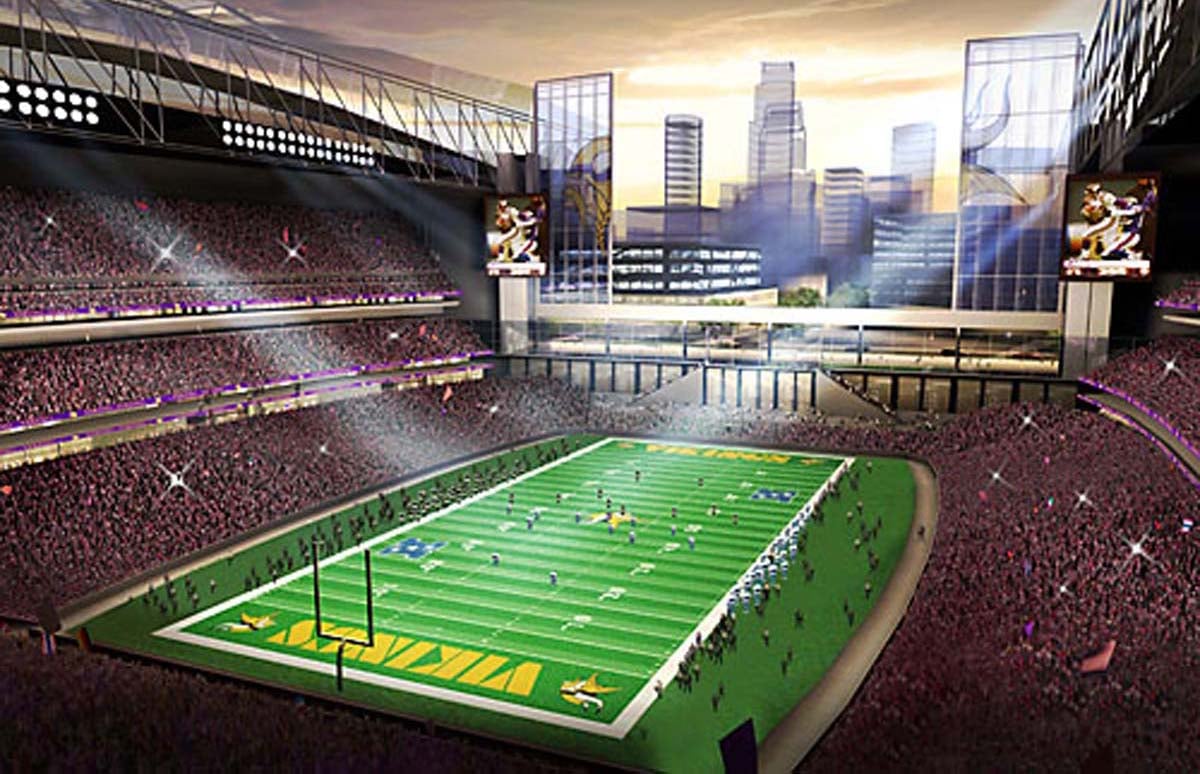Electronic Gaming Funding a Failure for New Minnesota Vikings Stadium
Posted on: September 21, 2013, 05:30h.
Last updated on: October 26, 2021, 06:09h.

When the Minnesota Vikings decided that they needed a new stadium, they wanted to take advantage of public financing if it was available. The state of Minnesota obliged, but decided that rather than take the money from the general fund or create a special tax to raise the money, they would bring electronic gambling machines to thousands of bars and other venues around the state. It seemed like a sound plan – until it was put into practice.
Net Gain: Bupkes
This week, Minnesota announced that residents and visitors to the state had put down about $15 million on the machines over the course of their first year in operation. Of that, approximately 85% went back to players in the form of winnings, leaving only about $2 million in earnings. That was split among charity expenses, donations and general taxes, and left absolutely nothing for the new stadium. That’s right: the electronic pull-tab style games raised nothing for their intended purpose over their first year in service.
The failure is an embarrassment for Governor Mark Dayton, who has been strongly behind the new Vikings stadium. According to him, the numbers that have come in show that the state itself was taking quite the gamble by relying on the machines to finance their portion of the stadium’s cost.
“To take an untried source of revenue for the sole source of funding for a major project is ill-advised,” Dayton said. “That’s my number one take-away from this.”
New Attempts at Financing
Since then, alternate forms of financing have been approved, including a short-term cigarette tax and the closing of a loophole in the corporate tax code.
“We made an honest mistake and corrected it,” Dayton said.
The project had problems from the beginning. Figures that suggested that the electronic machines would be able to cover the state’s entire burden were provided by the gambling industry, which said that the state would receive $35 million in tax money over the first year. To say these numbers were clearly inflated would be an understatement, obviously. Charity organizations were persuaded to sell machines to venues as fast as possible, and there was only one vendor from which to purchase the machines.
Perhaps worst of all was the fact that the public wasn’t strongly behind the stadium financing plan to begin with. Public financing for professional sports is always a tricky subject, with many constituents not having any interest in the stadium whatsoever, while many fans feel that billionaire owners should be able to pay the entire cost by themselves. In Minnesota, the Vikings new arena was dubbed the “millionaire’s stadium,” and it’s possible that knowing that playing the new machines would lead to stadium financing could have hurt revenues more than helped them.
However, there have been a few success stories. While the overall impact on charities from the electronic gambling experiment has been called “negligible,” some charities have done better. For instance, the Spring Lake Park Lions Club says that their overall pull-tab revenue (including the traditional paper pull-tabs) has gone up $93,000 in the past year since adding in the electronic versions of the games. In addition, some bars have been making as much as $18,000 a month in revenue from the machines.
As for the Vikings, they may earn some gambling money after all, but not from the electronic machines. Overall, the paper pull-tab games have seen much faster growth than the electronic games, bringing in $1 billion over the last year, a small amount of which may ultimately help pay for the stadium.